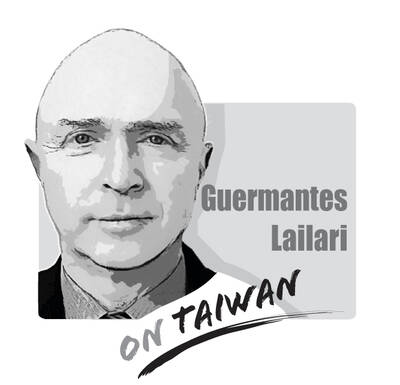Now that President Ma Ying-jeou (馬英九) no longer faces the pressure of getting re-elected, he can be bolder and more determined in his mandate in his second term. However, he should take action in a balanced and measured way, as the major tasks facing him involve not just cross-strait ties with China, but domestic issues and challenging global conditions.
For instance, over the past four years, Ma and his Chinese Nationalist Party (KMT) government have been criticized for their lackluster performance in creating jobs and narrowing the wealth gap. While they have often touted the benefits of the inking of the Economic Cooperation Framework Agreement (ECFA) with China to revitalize Taiwan’s economic growth, the fact that the election was so close-fought shows that only a few people and industries have enjoyed the fruits of closer cross-strait trade ties.
Thus, while Ma and his KMT are poised to continue and strengthen existing government policies over the next four years, especially as regards cross-strait economic measures, they need to strike a balance on how fast and how far they can go. Most importantly, they have to remind themselves that the benefits of closer cross-strait trade ties should be directed at more industries and the majority of the people.
The challenges facing the government on this front are threefold.
First, while the ECFA appears to provide business opportunities to Taiwanese firms in China thanks to the “early harvest” list of items enjoying concessionary tariff treatment, sooner or later the bilateral trade pact will offer opportunities for Chinese companies to do business in Taiwan. Eventually it will lead to competition between Taiwanese firms and their Chinese counterparts, in Taiwan and not just China.
Therefore, as the government has shown its intention to promote greater trade and investment liberalization across the Taiwan Strait through the ECFA, it must also carefully negotiate with China over investment protection and double-taxation to protect the interests of Taiwanese businesses.
Second, when the government is paying attention to benefits for Taiwanese firms operating in China, it should not neglect small businesses and the economically disadvantaged in Taiwan. There are clues to why Ma lost votes in certain parts of Taiwan in the election and he must realize the need to address those voters’ dissatisfaction with the government by improving the domestic business environment.
As further ECFA discussions with China might involve more tax reductions for the plastics, fiber, LCD, automobile and machinery industries, they could have both positive and negative impacts on domestic industries. As an increase in Chinese investment in Taiwan through the ECFA is very likely to lead to restructuring and consolidation of local industries, a responsible government needs to take pre-emptive measures to help local companies upgrade production to improve their competitiveness.
Third, the government should not forget about global economic conditions, as the development of an export-oriented Taiwan does not rely solely on China. The government has said it would step up the pace of signing free-trade pacts with other countries, as this is an important move to prevent Taiwan from becoming marginalized in the global economy, but it should proceed cautiously to avoid unfair treatment of domestic industries during the negotiation process.
Ma said on Sunday he wanted to leave a legacy in Taiwan after his second term. The opportunity exists, but it depends not just on his determination, but on how far and how fast he takes action and whether the action is taken in a balanced way.

“History does not repeat itself, but it rhymes” (attributed to Mark Twain). The USSR was the international bully during the Cold War as it sought to make the world safe for Soviet-style Communism. China is now the global bully as it applies economic power and invests in Mao’s (毛澤東) magic weapons (the People’s Liberation Army [PLA], the United Front Work Department, and the Chinese Communist Party [CCP]) to achieve world domination. Freedom-loving countries must respond to the People’s Republic of China (PRC), especially in the Indo-Pacific (IP), as resolutely as they did against the USSR. In 1954, the US and its allies
A response to my article (“Invite ‘will-bes,’ not has-beens,” Aug. 12, page 8) mischaracterizes my arguments, as well as a speech by former British prime minister Boris Johnson at the Ketagalan Forum in Taipei early last month. Tseng Yueh-ying (曾月英) in the response (“A misreading of Johnson’s speech,” Aug. 24, page 8) does not dispute that Johnson referred repeatedly to Taiwan as “a segment of the Chinese population,” but asserts that the phrase challenged Beijing by questioning whether parts of “the Chinese population” could be “differently Chinese.” This is essentially a confirmation of Beijing’s “one country, two systems” formulation, which says that
Indian Prime Minister Narendra Modi arrived in China yesterday, where he is to attend a summit of the Shanghai Cooperation Organization (SCO) with Chinese President Xi Jinping (習近平) and Russian President Vladimir Putin today. As this coincides with the 50 percent US tariff levied on Indian products, some Western news media have suggested that Modi is moving away from the US, and into the arms of China and Russia. Taiwan-Asia Exchange Foundation fellow Sana Hashmi in a Taipei Times article published yesterday titled “Myths around Modi’s China visit” said that those analyses have misrepresented India’s strategic calculations, and attempted to view
When Chinese President Xi Jinping (習近平) stood in front of the Potala Palace in Lhasa on Thursday last week, flanked by Chinese flags, synchronized schoolchildren and armed Chinese People’s Liberation Army (PLA) troops, he was not just celebrating the 60th anniversary of the establishment of the “Tibet Autonomous Region,” he was making a calculated declaration: Tibet is China. It always has been. Case closed. Except it has not. The case remains wide open — not just in the hearts of Tibetans, but in history records. For decades, Beijing has insisted that Tibet has “always been part of China.” It is a phrase